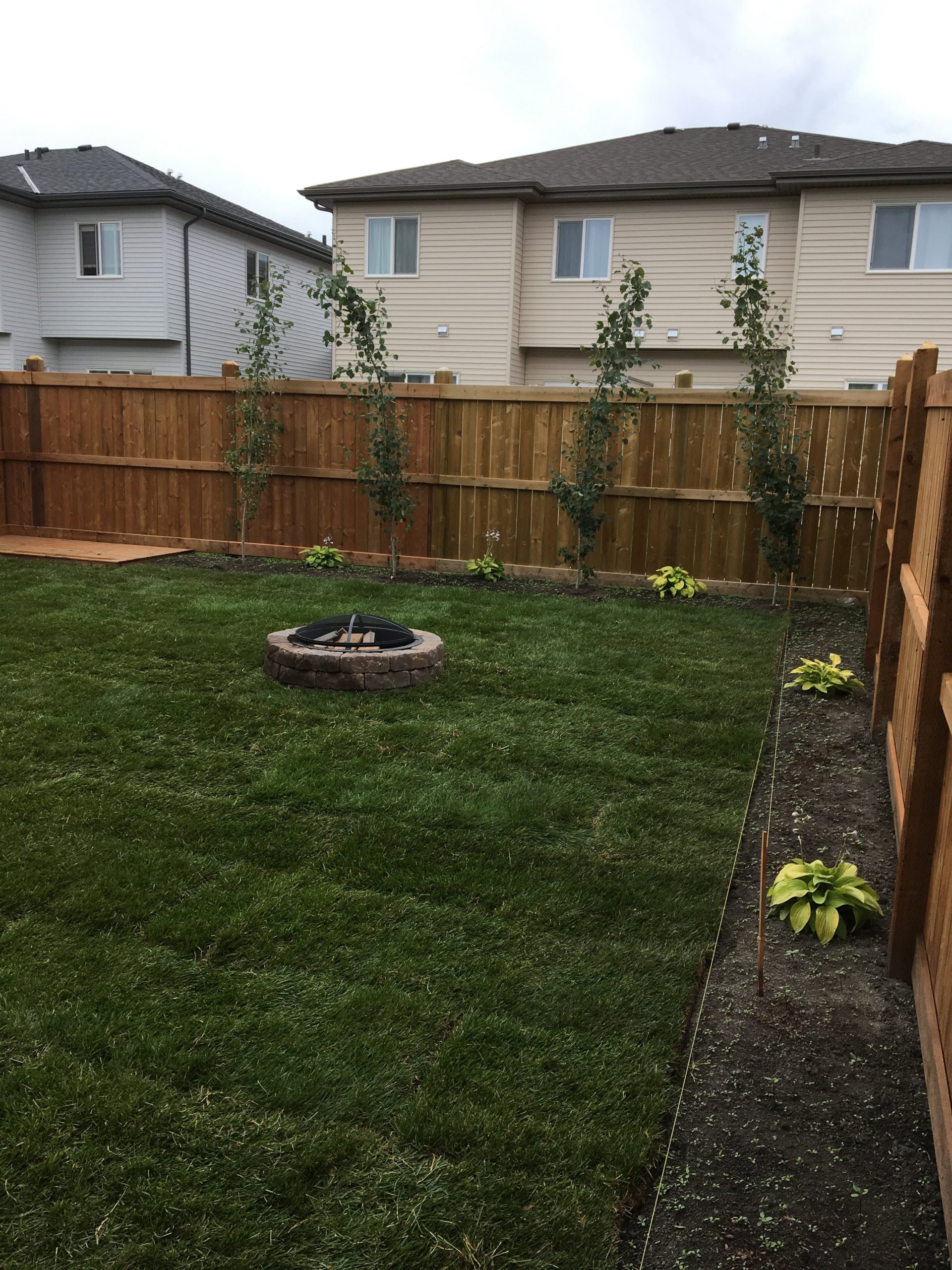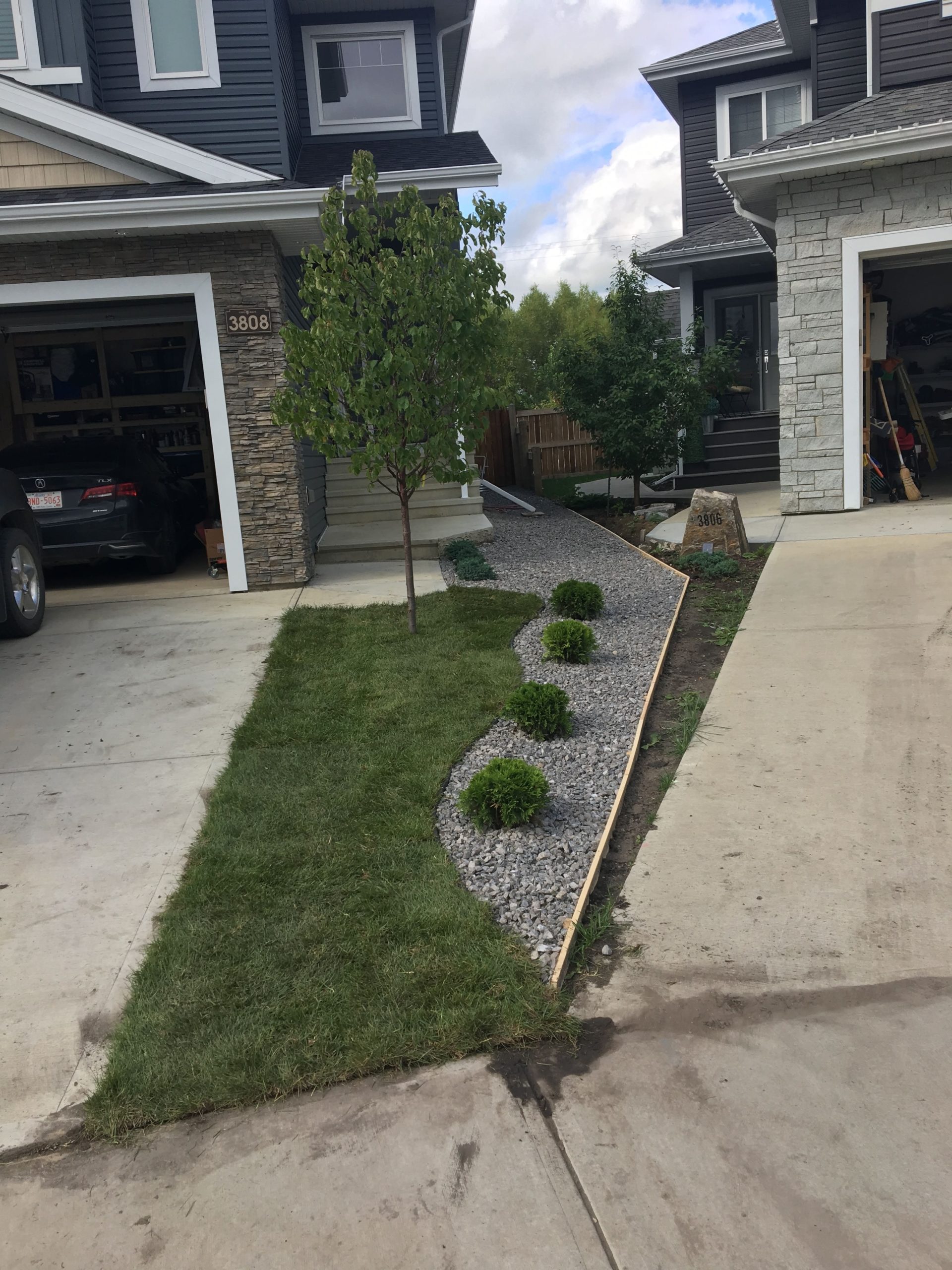Definitions and FAQ

Q: Can I make a change to the project once work has begun?
A: It depends on the type of change and when the request occurs, but typically you can do this. Please note that such changes can greatly impact the cost.
Q: Which permits are needed for a construction project?
A: The building inspection department, office of planning and zoning, or department of permits in your community will have a list of permits and inspections related to building and zoning codes for new construction or remodeling.

Landscaping Definitions:
- Architectural Guidelines: Rules and standards set by developers or municipalities to ensure consistency in building and landscaping designs within a neighborhood or community.
- Artificial Turf: Synthetic grass used as an alternative to natural sod, offering a low-maintenance and durable option for lawns.
- Approach: The driveway or entrance leading to a property, typically constructed to provide access for vehicles.
- Approach Construction: The process of building or improving the driveway or entrance to a property, including grading, material selection, and installation.
- Backfill: The act of refilling an excavated area with soil or material after construction or landscaping work is completed.
- Bed Maintenance: The process of keeping flower beds or garden beds neat and tidy by removing weeds, pruning plants, and adding mulch or soil as needed.
- Clay: A dense and compact soil type often found beneath topsoil, used in certain landscaping applications.
- Concrete Curbing: Edging made of concrete used to define and separate different landscaping areas, such as lawns and flower beds.
- Culvert: A structure that allows water to flow under a driveway, road, or other obstruction, often used in landscaping to manage drainage.
- Deck: A flat, raised outdoor platform, typically made of wood or composite materials, designed for leisure and entertainment.
- Developer: An entity or individual responsible for creating new properties and overseeing the landscaping and architectural guidelines for the area.
- Developer Landscape Requirements: Guidelines set by property developers outlining specific landscaping features or standards for new properties.
- Development: The process of constructing buildings, infrastructure, and landscaping to transform land into usable property.
- Edging: A barrier, often made of plastic, metal, or concrete, used to separate different landscaping areas, such as lawns and flower beds.
- Extruder: A machine used to shape or mold materials, often utilized in creating concrete curbing.
- Fall Cleanup: A landscaping service done in the fall to remove leaves, dead plants, and other debris to prepare the property for winter.
- Fence: A structure made of wood, metal, or other materials, used to enclose or divide property and enhance privacy.
- Final Grade: The finished surface of the ground after all landscaping or construction work is complete. It’s leveled and shaped according to the design specifications.
- Final Grade Certificate: An official document confirming that the final grading of a property meets the local municipality’s standards for drainage and elevation.
- Final Grade Survey: A land survey conducted after grading is completed to ensure compliance with design and drainage requirements.
- Floating Deck: A freestanding deck not attached to a building, usually sitting directly on the ground or slightly raised.
- Garden Mix: A blend of soil, compost, and other materials specifically designed for planting in gardens.
- Grading: The process of leveling and shaping the land to ensure proper drainage and prepare it for landscaping or construction.
- Gravel: Small, loose stones often used for paths, driveways, and drainage in landscaping projects.
- Infill: Soil, gravel, or other materials used to fill gaps or low areas in landscaping projects.
- Landscaping Clay: Clay soil specifically utilized in landscaping for building berms, filling low areas, or improving soil structure.
- Landscaping Fabric: A permeable material placed under mulch, rocks, or gravel to prevent weed growth while allowing water to pass through.
- Landscape: The overall design and arrangement of outdoor areas, including plants, hardscaping, and other features.
- Limestone: A type of natural stone often used for decorative rock features, pathways, or retaining walls in landscaping.
- Lot Grading: The process of leveling and shaping the land within a property boundary to manage water drainage and prepare for landscaping.
- Mulch: A material (such as bark, wood chips, or straw) spread over soil to retain moisture, suppress weeds, and improve soil health.
- New Build Construction: The process of developing new properties, including landscaping and structural elements.
- Patio: An outdoor living area typically paved with materials such as stone, concrete, or pavers, designed for relaxation and entertainment.
- Paving Stones: Flat, stone-like pieces used to create patios, walkways, and other hardscaping features.
- Pea Gravel: Small, smooth, and rounded stones used in landscaping for paths, driveways, and decorative purposes.
- Pergola: An outdoor structure with an open framework, often made of wood or metal, designed to provide partial shade and support climbing plants.
- Plot Plan: A detailed map or diagram of a property showing boundaries, structures, and planned landscaping features.
- Pressure Treated Deck Board: Wooden planks treated with chemicals to resist rot, insects, and decay, commonly used for outdoor decking.
- Property Easement: A legal agreement that grants access or use of a portion of a property to another party, such as for utilities or shared driveways.
- Property Line: The legally defined boundary that separates one property from another.
- Raised Garden Bed: An elevated planting area enclosed with materials like wood or stone, used for growing flowers, vegetables, or herbs.
- Real Property Report: A legal document showing property boundaries, structures, and improvements to confirm compliance with zoning and bylaws.
- Retaining Wall: A sturdy structure built to hold back soil or prevent erosion, often made of stone, concrete, or wood.
- Road Crush: A mix of small stones and gravel used for creating stable foundations for driveways, patios, or paths.
- Rock: Decorative stones used in landscaping for ground cover, paths, or accents.
- Rough Grade: The initial level of the ground after excavation or site preparation, before adding topsoil or making fine adjustments.
- Sod: Pre-grown grass and soil held together by roots, typically used for instant lawns.
- Spring Cleanup: A landscaping service performed in the spring to remove debris, weeds, and prepare the property for new growth.
- Survey Stakeout: The process of placing markers on a property to indicate boundaries and the location of planned structures.
- Topsoil: Nutrient-rich soil placed on the surface for planting or landscaping purposes.
- Vinyl Deck Board: Durable, low-maintenance synthetic planks made from PVC, used for building decks in landscaping projects.
- Zero Lot Line: A property design where the building is constructed very close to or on one of the property boundaries to maximize usable space.
Snow Removal Definitions:
- Aggregate Driveway: A driveway made from a mix of stone, gravel, and concrete, requiring careful snow removal to avoid damage to the surface.
- Backpack Leaf Blower: A portable, motorized tool worn on the back, often used in snow removal to clear light snow from sidewalks, walkways, or small areas.
- Driveway: A private road leading to a property, commonly cleared of snow to ensure vehicle access.
- Dump Trailer: A trailer designed to tilt and unload materials, such as snow, quickly and efficiently.
- Dump Truck: A large vehicle equipped with a tilting bed used to transport and dispose of heavy loads of snow.
- Gravel: A coarse aggregate of small stones often spread over driveways or used for traction during snow and ice removal.
- Ice Control: Methods and materials used to prevent or manage the formation of ice on sidewalks, driveways, and parking lots.
- Ice Melt: Chemical products designed to lower the freezing point of water, effectively melting ice on walking and driving surfaces
- Parking Lot: An area designated for vehicle parking, which needs snow removal to ensure accessibility and safety during winter.
- Parking Lot Sanding: The process of spreading sand over parking lot surfaces to improve traction and reduce slipping hazards caused by ice and snow.
- Pedway: A pedestrian walkway, often covered or enclosed, that requires snow and ice removal for safe passage.
- Plow Truck: A truck equipped with a snow plow, used to clear snow from larger surfaces like roads or parking lots.
- Rock Chips: Small pieces of crushed rock or gravel used on icy surfaces to provide traction and prevent slips.
- Road Salt: Sodium chloride or similar compounds spread on roads, sidewalks, or parking lots to melt snow and ice and prevent refreezing.
- Sidewalk: A paved pathway for pedestrians, often requiring dedicated snow removal services to keep it clear and safe.
- Skid Steer: A compact, versatile machine commonly used in snow removal for plowing, clearing, and transporting snow in tight spaces.
- Snow Plow: A large blade attached to a vehicle or machine to push snow off roads, parking lots, or other surfaces.
- Snowbucket: A specialized attachment for machinery like skid steers or wheel loaders designed to lift and transport large amounts of snow.
- Sweeper: A machine with rotating brushes used to clear snow and debris from flat surfaces like sidewalks and parking lots.
- Tractor: A heavy-duty vehicle used in snow removal, often equipped with attachments like snowblowers, plows, or buckets.
- Walkway: A path for walking on private or public property, typically requiring snow removal to maintain accessibility.
- Wheel Loader: A large machine with a front-mounted bucket used for moving significant amounts of snow in parking lots and other wide-open areas.
- Wing Plow: A snow plow with additional side wings for clearing a wider path, commonly used for roads or highways.
Call For A Free Quote
Commercial Snow Removal
Residential Snow Removal
Bobcat Excavating
Complete Landscaping
Lawn Care
Call Or Text For a Free Quote
780-900-2346
Follow us on Facebook!
